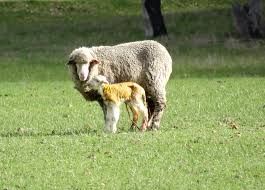Ewes joined before the 22nd of December will have fewer ewes cycling, especially in crossbred ewes. Ovulation rates peak between March and May in response to shorter day length. Management methods to increase the number of ewes cycling include:

Ewes in higher condition score (CS) at joining will conceive more lambs than those with lower condition scores. For ewes at CS 3 or above at joining, there should be less than 10% dries in Merinos and less than 5% dry in crossbred flocks. Having ewes on a rising plane of nutrition prior to joining will help to improve conception rates. Flushing tends to have more of an effect on ewes in lower condition score.
Ewes sired by rams with high Australian sheep breeding values (ASBV’s) for number of lambs weaned (NLW) will wean a higher percentage of lambs. Additionally, rams with a higher ASBV for Scrotal circumference (SC) will have daughters with higher fertility.
Pasture toxicities from oestrogenic clovers such as Yarloop, Dwalganup, Dinninup and Geraldton, when dominant (> 20%) in the pasture can cause temporary or permanent infertility. Managing clover disease (permanent infertility) includes providing safer pastures for ewe weaners, hoggets and ewes in ascending age, since the effects are cumulative over time. To avoid temporary infertility, avoid grazing oestrogenic dominant pastures during joining. When pastures are dry they are safer. High endophyte perennial rye grass pastures can also lower conception rates and lambing performance by as much as 20%, even without ryegrass staggers.
The effect of joining on lucerne has also been debated, with NZ and NSW studies showing that if lucerne is affected by fungal infections, insect attack or poor nutrition; the levels of the phyto-oestrogenic compound, coumestrol, can build up in the plant, with resulting poor conception rates. However, when the stand is leafy, actively growing and free of disease it can lead to an increased number of foetuses. Further research is being done in this area.
Poor animal health such as ewes with high worm burdens or footrot will slow weight gain or cause weight loss resulting in lower reproductive rates. Stress (shearing, extreme periods of heat or sudden weight loss) immediately prior to or during joining can adversely affect fertility.
Prior to joining, it is good practice to perform an examination of the 5 T’s in rams:
Since sperm production takes around 7 weeks, avoid any feed, heat or management stress during the pre-joining period, and treat any animal health issues such as foot abscess or flystrike straight away to prevent a drop in semen quality and quantity.
Rams should be joined at a rate of 1 percent plus one for mature ewes (at least five rams for a mob of 400 ewes), and at least 1.5 percent for maiden ewes and 2 percent for ewe lambs. Consider feeding a high quality feed such as lupins (0.5 to 1kg per week) for 50 days prior to ensure maximum testes size and sperm output. If joining in containment or whilst supplementary feeding ewes, ensure rams are introduced to the feed prior to joining to prevent acidosis.
Tweet